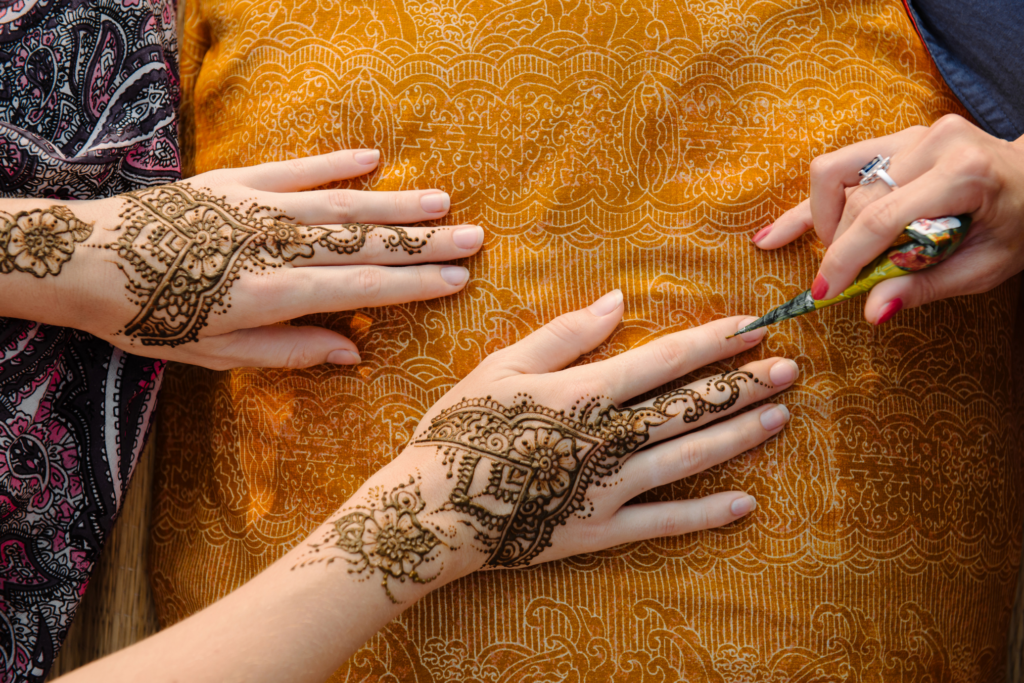
The Complete Guide to Selecting Your Henna Artist
Lawsonia Inermis, most commonly known as henna, is also known as Henne, Al-Hanna, Jamaica Mignonette, Egyptian Privet, and other names around the world. Al-Hinna is the Arabic phrase from whence the English word henna was derived. It is a blooming shrubby plant whose leaves are used in the coloring of skin, hair, and fingernails. The mixture is formulated with ‘tannis’, a fading agent that produces a reddish-brown tint when applied. Human migration throughout thousands of years merged many cultures, making it hard to pinpoint the origin of henna body art. Historians, however believe that henna has been utilized by the beauty and health professionals for at least 5,000 years.
In ancient times, henna was mostly used for the purpose of improving one’s appearance, particularly one’s hands and body. Ancient Egyptians used it as a hand and nail dye before they were mummified. Its application was also associated with spiritual rites in the southern region of China. Modern day, henna is a fashion statement, and many obtain henna designs for number of reasons. Today, many people have henna designs for many reasons, including as a fashion statement. Sirwiss has teamed up with mobile henna artists to provide you the best henna experience, no matter where you happen to be. However, one must first understand how to choose the best artist. Find out all you need to know to choose your own henna artist by reading on!
1. They Use Nothing but Natural Henna
The uppermost leaves of the plant are selected, dried, and crushed to obtain the powder needed to produce natural henna. When this powder is combined with sugar, a liquid such as water or lemon juice, and a non-citrus essential oil such as lavender, tea-tree, or eucalyptus, you get the most luxurious and dark-staining henna paste, which stains your skin a reddish burgundy hue. If you keep this paste on for at least 8 hours, the color will last for 3-5 days and will fade entirely in 2 weeks. Then there are the chemicals disguised as henna. If your henna artist uses black henna, be aware that it contains PPD (p-phenylenediamine), a hazardous and very poisonous substance that produces horrible allergic responses in individuals who use it. To put it simply, it is hair color in a jar. Our associated henna artists exclusively utilize all-natural ingredients in their designs for their loyal customer.
2. They Prepare Their Own Henna Paste and Know the Ingredients
Qualified artists who are partnered with Sirwiss care about their clients’ health will either make their own paste or get it from a reliable supplier. They’ll tell you all you need to know about the risks of using black henna and other chemical hennas. Do not apply the henna paste to your skin if the names of its ingredients are hard to pronounce or the artist do not know what’s in it.
3. They successfully incorporate the design features you desire
Henna art is a custom for many brides to celebrate their new lease on life of togetherness, especially for Sikh, Muslim, and Hindu weddings. Brides from these communities, it’s an important milestone in life. It’s unusual for a bride not to have mehndi, therefore it’s essential to create designs that reflect who she is and what she loves. After your artist completes your design to your satisfaction, all eyes will be on you and you won’t be able to take yours off it as praises pour in.
4. They Instruct You on How to Maintain Your Newly Applied Design
After-design maintenance is required to achieve the design’s rich tones. When your design looks magnificent at the end of your scheduled appointment, you’ll feel like you got your money’s worth. Each professional has their own technique for getting a rich henna tint. To name a few:
- Steam your design (keeping the henna applied hand over a pot or pan of steaming water with a few cloves in it)
- Use a sugar-water paste or lemon juice sealant to keep your design in place
- Use Hypafix tape (or medical gauze) to keep your design intact
5. They’re on time
It is recommended that henna be done at least 24 hours before the wedding day if the bride wants a deep, dark hue. Bridal henna, according to experts, is at its most beautiful after being left on the hands for seven to eight hours. Get the best outcomes from your henna artist by making sure they show up on time. Sirwiss has collaborated with professional henna artists that respect their deadlines and do excellent work.